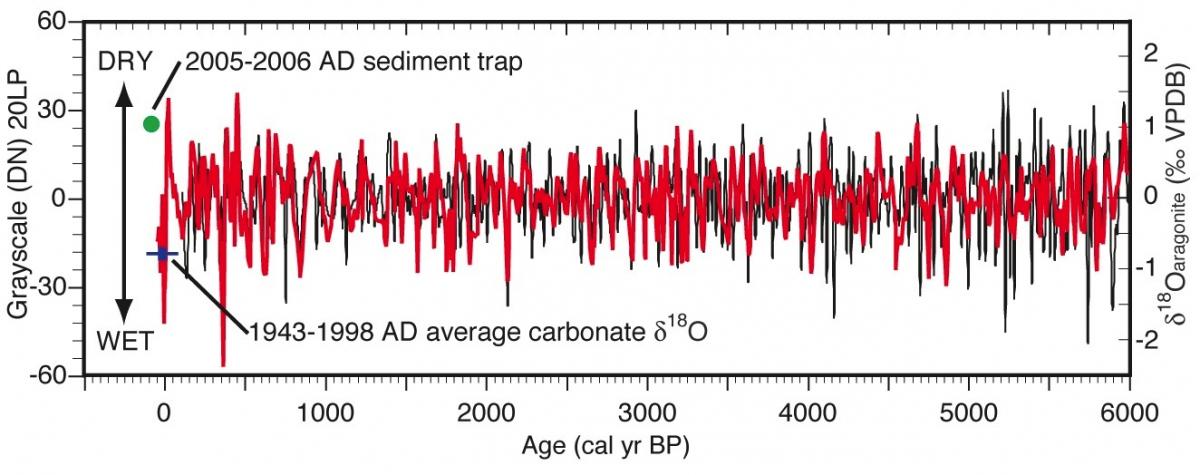http://www.news.pitt.edu/news/Abbott-wet-dry-cycles-American-West
Pitt-Led Researchers Report 6,000-Year Climate Record Suggests Longer Droughts, Drier Wet Periods for Pacific Northwest
The multi-university team used a sediment core from Washington state’s Castor Lake to unravel regional wet/dry cycles since 4,000 BCE and found longer, more extreme periods have occurred since 1200 AD, possibly associated with changing El Niño/La Niña patterns, according to a report in the Proceedings of the National Academy of Sciences
Feb 21, 2011
Contact:
Morgan Kelly | mekelly@pitt.edu | 412-624-4356 | Cell: 412-897-1400 | Fax: 412-624-4895
PITTSBURGH—University of Pittsburgh-led researchers extracted a 6,000-year climate record from a Washington lake that shows that the famously rain-soaked American Pacific Northwest could not only be in for longer dry seasons, but also is unlikely to see a period as wet as the 20th century any time soon. In a recent report in the
http://www.pnas.org/">Proceedings of the National Academy of Sciences, the team linked the longer dry spells to the intensifying El Niño/La Niña climate pattern and concluded that Western states will likely suffer severe water shortages as El Niño/La Niña wields greater influence on the region.
The researchers analyzed a sediment core from Castor Lake in north central Washington to plot the region’s drought history since around 4,000 BCE and found that wet and dry cycles during the past millennium have grown longer. The team attributed this recent deviation to the irregular pressure and temperature changes brought on by El Niño/La Niña. At the same time, they reported, the wet cycle stretching from the 1940s to approximately 2000 was the dampest in 350 years.
…
The team produced a climate record from the lake mud by measuring the oxygen isotope ratios of the mineral calcite that precipitates from the lake water every summer and builds up in fine layers on the lake floor. More calcite accumulates in wet years than in dry years. They reproduced their findings by measuring grayscale, or the color of mud based on calcite concentration, with darker mud signifying a drier year.

The record in the sediment core was then compared to the Palmer Drought Severity Index, which uses meteorological and tree-ring data to determine drought cycles dating back 1,500 years, Abbott explained. The Castor Lake core matched the Palmer Index reconstructed with tree-ring data and expanded on it by 4,500 years, suggesting that lakebeds are better records of long-term climate change, the authors contend.
…